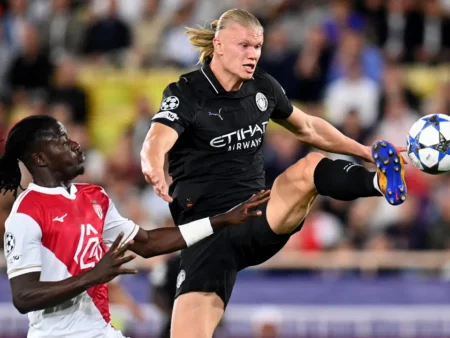The summer football calendar in North America has, for some time, been a tapestry woven with domestic league fixtures, interspersed with continental competitions. However, the introduction of the Leagues Cup has decisively added a new, vibrant thread to this fabric. What began as an intriguing exhibition has matured into a high-stakes, competitive tournament, compelling Major League Soccer (MLS) and Liga MX to pause their respective seasons for a continental showdown. This isn`t merely a friendly skirmish; it`s a meticulously crafted experiment in inter-league integration, designed to elevate the profile of football across the continent.
The Architects of Ambition: Unpacking the New Format
The Leagues Cup has undergone a significant transformation, shedding its prior expansive inclusivity for a more exclusive, intensified format. Now, only the top eighteen teams from each league – MLS and Liga MX – earn the right to compete. This shift signals a clear intent: to foster higher quality matches and a more concentrated competitive environment from the outset. The tournament runs from late July through August, effectively hitting the brakes on regular league play – a testament to its burgeoning importance.
The group stage introduces a fascinating strategic layer: MLS clubs face only Liga MX opposition. This ensures immediate cross-border rivalry. What`s particularly noteworthy, and perhaps a touch unconventional, is the system of separate standings. Each league maintains its own table, with the top four teams from each advancing to the quarterfinals. This means a club could amass a respectable point total but still miss out on the knockouts if their intra-league rivals perform exceptionally well. It`s a structure that demands consistent performance and a keen eye on goal differential, as games cannot end in a draw. Should scores be level at full time, a penalty shootout decides the victor, with three points awarded for a regulation win, one for a regulation draw, and a bonus point (totaling two) for the shootout winner. This system ensures every kick, every save, and every goal carries significant weight, adding a palpable layer of drama to each fixture.
Rules of Engagement: Points and Progression
- Group Stage Exclusivity: MLS clubs only play Liga MX clubs.
- Dual Tables: Standings are maintained separately for MLS and Liga MX teams.
- Knockout Qualification: The top four teams from each league`s respective table advance to the quarterfinals.
- No Draws: All group stage matches concluding in a tie proceed to a penalty shootout.
-
Scoring System:
- Regulation Win: 3 points
- Regulation Draw: 1 point
- Penalty Shootout Winner: 2 points (for the winning team after a draw)
- Tiebreakers (in order): Wins in regulation time, Goal differential, Most goals scored, Fewest goals conceded, Fewest points in fair play table, Organized draw.
The Cost of Glory: Fixture Congestion and Player Welfare
While the ambition behind the Leagues Cup is commendable, it undeniably adds another demanding layer to an already packed football calendar. MLS teams, already navigating a gruelling season with multiple domestic and continental cup competitions, now face an enforced mid-season sprint through the Leagues Cup. One might almost hear a collective groan from physiotherapists across North America as they survey the fixture list. For teams like Inter Miami, fresh off the acquisition of global icons such as Lionel Messi and Jordi Alba, the tournament represents their third cup competition of the season – a schedule that has already reportedly led to player suspensions due to attempts at rest. It`s a delicate balance: the desire for compelling, high-profile matches versus the very real threat of player fatigue and increased injury risk. The tournament`s intensity, where every match could dictate progression, means there`s little room for rotation or complacency. The modern footballer, it seems, is condemned to a perpetual motion machine of competitive encounters.
The Unexpected Contender: San Diego FC`s Debut
In a surprising twist, the expansion side San Diego FC found themselves catapulted into the Leagues Cup in their inaugural MLS season. Their inclusion came as a direct replacement for the Vancouver Whitecaps, whose commitments to the Concacaf Champions Cup and Canadian Championship precluded their participation. This unexpected debut offers San Diego FC an immediate high-profile platform to test their mettle against established clubs from both leagues. Their early success in MLS suggests they are not merely making up the numbers, but are eager to capitalize on this unique opportunity to build momentum and reputation.
The Road Ahead: A Continental Showdown Unfolds
The Leagues Cup is more than just a collection of games; it`s a narrative building in real-time. The early group stage results have already delivered upsets and nail-biting finishes, hinting at the competitive intensity that will define the knockout rounds. As teams battle for supremacy within their respective league tables, the anticipation for the MLS vs. Liga MX quarterfinal matchups, and beyond, steadily grows. The tournament culminates in late August, promising a decisive champion and, perhaps more importantly, a clearer understanding of the inter-league power dynamics in North American football.
The Leagues Cup is a bold statement. It`s a commitment to elevating the game, fostering genuine rivalries, and ultimately, shaping the future of club football on a continental scale. Whether it`s a blueprint for seamless integration or a rigorous test of endurance, one thing is certain: the Leagues Cup has irrevocably changed the rhythm of North American soccer, demanding attention and delivering drama.










